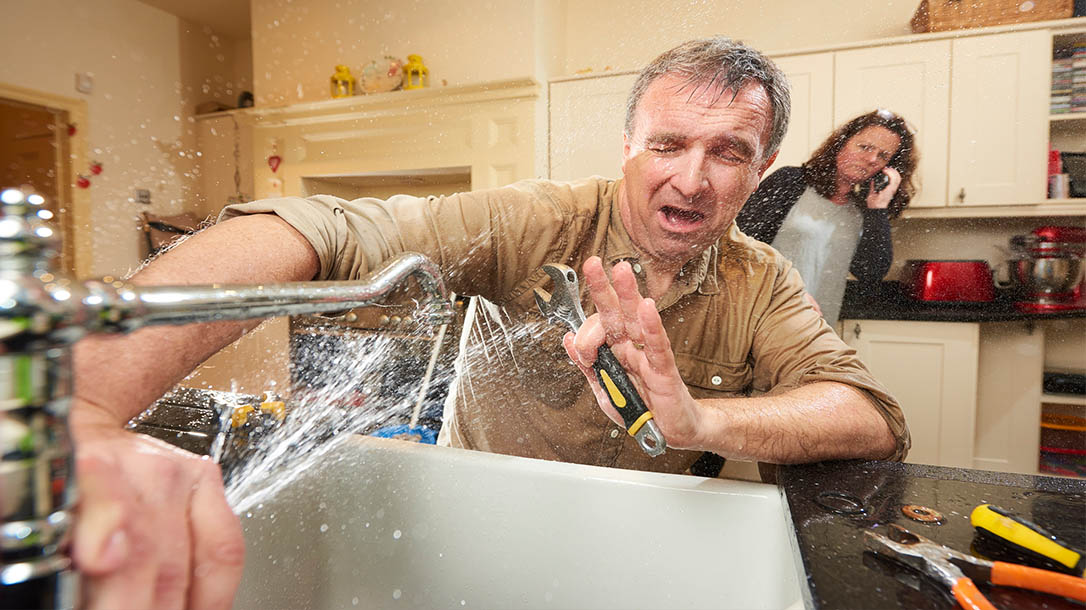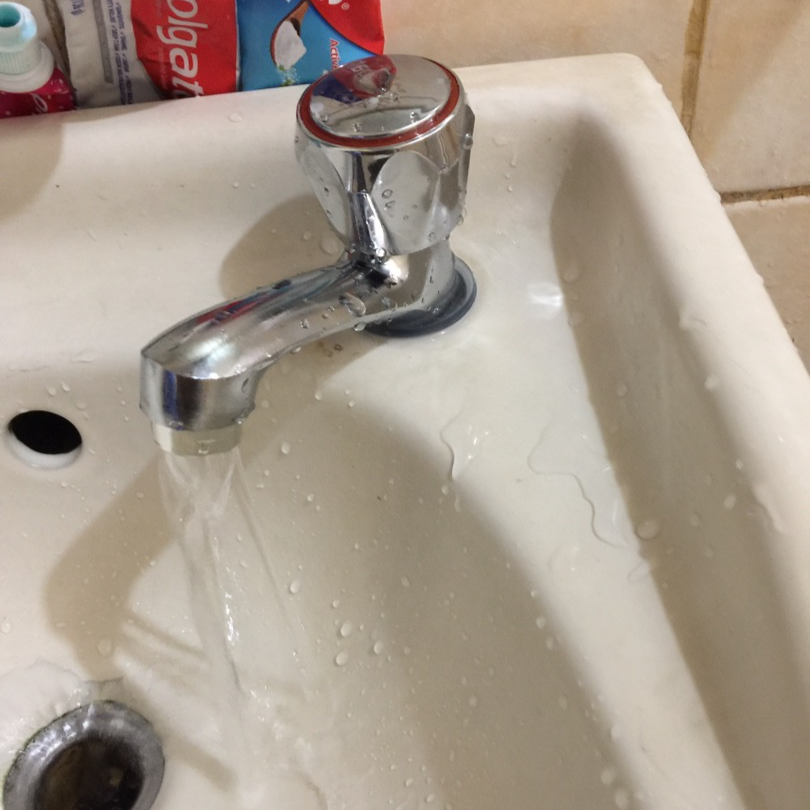Which It's Critical to Repair a Faulty Faucet
Which It's Critical to Repair a Faulty Faucet
Blog Article
They are making a few good annotation relating to What Causes Leaky Faucets & How To Fix Them in general in this content in the next paragraphs.

Leaking faucets may seem like a small aggravation, however their influence goes beyond simply the annoyance of the audio. From drainage to sustaining unnecessary monetary prices and health risks, overlooking a leaking tap can bring about different repercussions. In this article, we'll look into why it's critical to resolve this common household issue quickly and efficiently.
Waste of Water
Ecological Effect
Leaking taps add dramatically to water wastage. According to the Environmental Protection Agency (EPA), a single tap leaking at one drip per secondly can waste more than 3,000 gallons of water per year. This not only pressures water resources however additionally affects ecosystems and wildlife based on them.
Financial Expenses
Enhanced Water Costs
Beyond the environmental influence, dripping taps can blow up water expenses considerably. The accumulated wastage gradually equates right into greater utility expenses, which might have been prevented with timely repair services.
Prospective Residential Or Commercial Property Damage
Furthermore, extended leaking can cause damage to fixtures and surfaces bordering the tap. Water build-up can cause staining, corrosion, and also architectural issues if left unattended, causing extra repair work costs.
Health Concerns
Mold and Mildew Development
The constant presence of moisture from a dripping tap develops an excellent setting for mold and mold growth. These fungi not only endanger interior air top quality however also pose health threats, particularly for people with breathing problems or allergies.
Waterborne Conditions
Stagnant water in trickling faucets can become a breeding place for germs and various other pathogens, boosting the danger of waterborne conditions. Pollutants such as Legionella microorganisms prosper in stagnant water, potentially causing significant ailments when ingested or breathed in.
DIY vs. Expert Repair work
Pros and Cons of DIY Repair
While some might try to fix a dripping tap themselves, DIY repair work include their very own collection of obstacles. Without correct knowledge and tools, DIY attempts can worsen the concern or result in incomplete fixings, lengthening the problem.
Advantages of Employing an Expert Plumber
Employing an expert plumber guarantees that the underlying reason for the leaking tap is addressed efficiently. Plumbings possess the proficiency and devices to detect and fix tap concerns successfully, saving time and reducing the risk of additional damages.
Step-by-Step Overview to Taking Care Of a Dripping Faucet
Tools Called for
Prior to trying to fix a leaking tap, gather the needed devices, including an adjustable wrench, screwdrivers, replacement parts (such as washers or cartridges), and plumber's tape.
Usual Faucet Issues and Their Solutions
Determine the type of tap and the particular problem triggering the drip. Typical troubles include worn-out washers, corroded valve seats, or malfunctioning O-rings. Describe manufacturer guidelines or on the internet tutorials for detailed assistance on repair work.
Preventive Measures
Regular Maintenance Tips
To prevent dripping faucets, carry out regular upkeep such as cleaning up aerators, evaluating for leaks, and changing damaged parts promptly. Additionally, think about mounting water-saving devices or upgrading to a lot more reliable fixtures.
Relevance of Prompt Fixes
Attending to leaking taps as soon as they're noticed prevents further water wastage and possible damage, inevitably conserving both water and money over time.
Impact on Residential Or Commercial Property Value
Perception of Well-Maintained Building
Keeping a residential or commercial property in good condition, including addressing maintenance concerns like leaking taps, improves its viewed value and value among prospective purchasers or tenants.
Impact on Resale Worth
Properties with well-maintained plumbing components, consisting of faucets, command greater resale worths in the real estate market. Addressing trickling taps can add to a favorable impact during property inspections and settlements.
Environmental Obligation
Individual Payment to Preservation
Taking duty for fixing dripping faucets lines up with more comprehensive efforts toward water preservation and ecological sustainability. Every individual's actions collectively make a considerable impact on preserving valuable sources.
Lasting Living Practices
By focusing on prompt repair services and taking on water-saving habits, people add to lasting living practices that benefit both present and future generations.
Verdict
Addressing a leaking tap surpasses simple comfort; it's a necessary step towards saving water, reducing financial prices, and guarding health and wellness and property. Whether via DIY repairs or specialist support, acting to take care of leaking faucets is a little yet impactful way to advertise responsible stewardship of resources and contribute to a much healthier, more lasting future.
How to Fix a Dripping or Leaky Faucet
A leaking faucet is one of the most common problems that homeowners encounter, but it being commonplace doesn’t make it any less annoying. The constant drip drip drip of a leaking bathtub faucet, showerhead, or sink tap can disturb your home’s serenity. Left neglected, a dripping faucet can also result in higher water bills and discoloration or mold growth in your sink or plumbing fixtures.
Fortunately, you don’t have to be a trained plumber to know how to stop a dripping faucet. With some basic tools, replacement parts, and a little patience, leaky faucet repair is a breeze. In this article, we’ll explain what causes dripping faucets and how you can fix them.
What Causes a Leaking Faucet?
Kitchen and bathroom faucets come in all manner of designs, but most involve some combination of valves, O-rings, seals, and washers. The O-ring is usually the weakest link, but any one of these pieces can wear down over time. Heat, moisture, temperature fluctuations, minerals, mold, and movement can contribute to warping and corrosion, breaking the watertight seal. This just comes with the territory of being a homeowner. Everything is always subject to wear and tear, and some component parts of your appliances and fixtures need to be replaced on occasion. At least replacement O-rings are cheap!
More rarely, dripping faucets can be a symptom of excessively high water pressure. Were this the case in your home, you would probably notice that the leak is not isolated to one faucet. Water pressure issues are harder to resolve on your own. We recommend contacting a professional plumber if you suspect your water pressure is too high.
How to Fix a Dripping Faucet
Pipe wrench or monkey wrench Allen wrench set Screwdrivers Old towel or rag Shut off the water.
Before you do anything, you need to turn off the water to keep from drenching your kitchen or bathroom. You should find a valve under the sink and against the wall. Once you’ve turned this valve, try turning the faucet on to confirm that the water source has been cut off.
If you can’t locate your local valve for the faucet you’re working on, you can always shut off the water to the house at the main valve. Of course, this will prohibit anyone from using the sinks, showers, or toilets while you’re working on the faucet that’s giving you trouble.
Plug or block the drain.
You’ll be disassembling the faucet and removing some small bits of hardware. Plug the drain with a stopper or rag to avoid the possibility of a small screw falling into your P-trap.
Take apart the faucet assembly.
There are several varieties of kitchen and bathroom faucets, each with its own manner of assembly. For detailed instructions on how to disassemble your faucet, you can refer to the fixture’s manual or contact the manufacturer. If you know whether you have a ball, disc, cartridge, or compression faucet, you can find detailed schematics online.
In general, you need to begin by removing the faucet handles. You might notice a small screw that you’ll need to remove with a screwdriver or Allen wrench. If you don’t see any visible securing hardware, it’s likely hidden under a decorative cap that can be unscrewed or popped off with flathead screwdriver.
Remove each piece methodically, consulting a schematic when necessary. Take notes or arrange the pieces in such a way to make it easier to correctly reassemble the faucet later.
Remove the cartridge.
Once you’ve removed the handles and securing hardware, you should be able to remove the valve cartridge or stem. Some cartridges will slide right out. Other faucet models will require you to loosen a nut with a pipe wrench before you can remove the valve stem.
Examine the exposed hardware.
With the cartridge or stem removed, inspect the component parts. Check the rubber O-rings for wear and tear. Also examine the seat washer for corrosion or other damage. These pieces are usually the responsible parties for a dripping faucet, but it’s worth inspecting the other component parts while you have the faucet disassembled.
Find replacement parts.
Once you’ve identified which faucet component has failed, find an identical replacement. Your local hardware store should have O-rings, seat washers, and other standard components in stock. If you have a luxury or uncommon faucet, you may have to contact the manufacturer for a replacement part.
It’s a good idea to take your old parts with you to the hardware store so you can compare them with the store’s inventory and be sure you’re purchasing the correct replacement.
Reassemble the faucet.
With your new parts in hand, reconstruct the faucet and handles. Don’t be tempted to overtighten screws or nuts. You might think this could create a better seal, but it can instead damage or bend a delicate part of the assembly and create a new problem for you.
Turn on the water and test the faucet.
The only thing left to do is test your work. Unplug the sink, turn the water back on, and try the faucet. Congratulate yourself on a job well done!
https://www.libertyhomeguard.com/how-to-fix-a-dripping-or-leaky-faucet/

As a passionate person who reads on Why Is It Important To Fix Your Leaking Tap/Faucet?, I think sharing that segment was really helpful. Remember to pause to distribute this blog entry if you appreciated it. Thanks for being here. Please come visit our site back soon.
Report this page